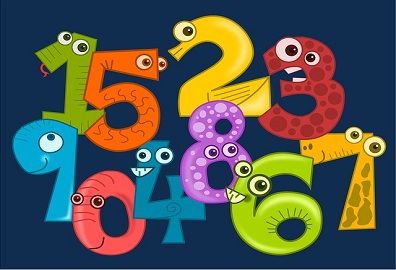 Mathematics is a game of numbers, where we study number, its types and the concepts relating to it. Arithmetic is that branch of mathematics which focuses on properties and manipulation of numbers. Factors and multiples are two key concepts studied together in arithmetic, at the elementary level. A factor is a number that leaves no remainder behind after it divides the specific number.
Mathematics is a game of numbers, where we study number, its types and the concepts relating to it. Arithmetic is that branch of mathematics which focuses on properties and manipulation of numbers. Factors and multiples are two key concepts studied together in arithmetic, at the elementary level. A factor is a number that leaves no remainder behind after it divides the specific number.
On the contrary, multiple is a number reached by multiplying a given number by another. While factors of a number are are finite, multiples are infinite.
At first instance, these two appear alike, but there are a number of differences between factors and multiples, which we have explained in this article.
Content: Factors Vs Multiples
Comparison Chart
| Basis for Comparison | Factors | Multiples |
|---|---|---|
| Meaning | Factor refers to an exact divisor of the given number. | Multiple alludes to the result we get, when we multiply a given number by another number. |
| What is it? | It is a number that can be multiplied to get another number. | It is a product obtained after multiplying the number by an integer. |
| Number of factors/multiples | Finite | Infinite |
| Outcome | Less than or equal to the given number. | Greater than or equal to the given number. |
| Operation used | Division | Multiplication |
Definition of Factors
The term ‘factors’ is used to mean the numbers which divide the given number perfectly, i.e. without leaving a remainder. E.g. 2 is one of the many factors of 8 since on dividing 8 by 2, we get 4 and does not leave any remainder. The other factors of 8, which are 1, 4 and 8.
Further, factors are what one can multiply with another number, to get the required number. There is a minimum of two factors of every number, i.e. 1 and the number itself.
To find out factors of a given number, you need to identify the numbers that evenly divides that particular number. And to do so, start right from number 1, as it is the factor of every number.
Definition of Multiples
In mathematics, the product of two whole numbers is defined as the multiple of the numbers. E.g. 2 × 4 = 8 i.e. 8 is a multiple of 2 and 4. In addition to this, for a given number, multiple is a number, that can be divided by the given number exactly, it does not leave any remainder at the end.
There is no end of multiples of a given number. Each and every number is a multiple of 0 and itself.
To find out multiples of a given number, you need to multiply that particular number by integers beginning with number 1. The resultant number, after the multiplication of the given numbers, is the multiple of the given number.
Key Differences Between Factors and Multiples
The points given below are substantial so far as the differences between factors and multiples are concerned:
- Factors are described as a list of numbers, each of which, completely divides a given number, i.e. it is a perfect divisor of a number. On the other hand, multiples can be understood as the list of numbers which are actually the products of that particular number.
- Factor is a number that can be multiplied with a particular number to obtain another number. Conversely, multiples are the product, which is reached after multiplying the number by an integer.
- The number of factors of a particular number is limited, but the number of multiples of a given number is endless.
- Factors are either less than or equal to the specific number. Unlike multiples, which are greater than or equal to the given number.
- The operation used for obtaining factors of a particular number is division. As opposed, the operation used for getting multiples of a number is multiplication.
Example
Suppose there are two number 2 and 6, where 2 is the factor of 6, then 6 will essentially be a multiple of 2. Hence, by this explanation, you might have understood that a number is a multiple of all its factors, like in our example 6 is a multiple of all its factors, i.e. 1, 2, 3 and 6.
Conclusion
To sum up, we can say that factors are the numbers that can be multiplied to get another number. On the other hand, multiples are the product, that one can get by multiplying a number with another. When a number possesses only two factors, i.e. 1 and itself, then that number will be known as a prime number.






Leave a Reply